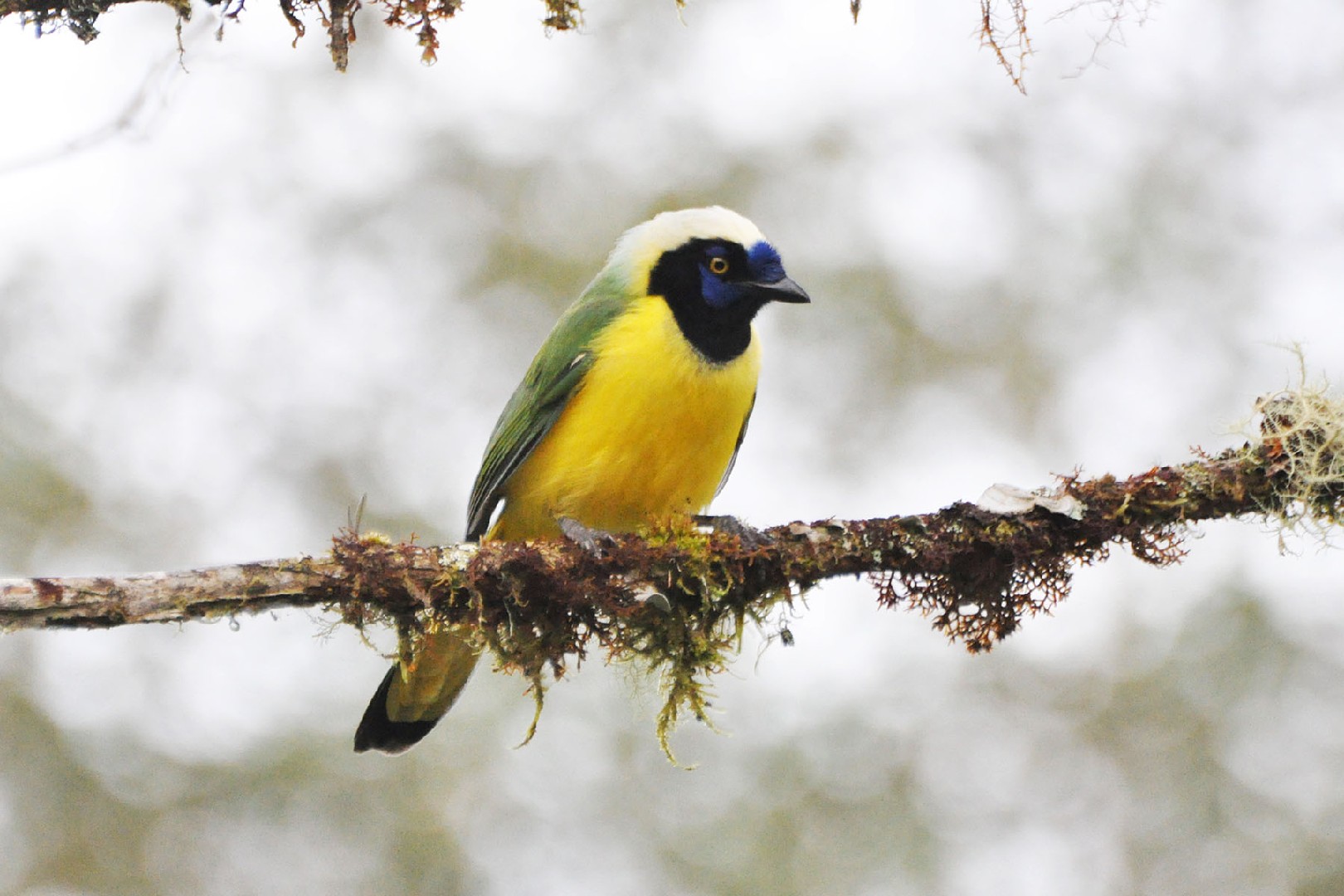Green Jay
A species of Typical Neotropical Jays Scientific name : Cyanocorax yncas Genus : Typical Neotropical Jays
Green Jay, A species of Typical Neotropical Jays
Botanical name: Cyanocorax yncas
Genus: Typical Neotropical Jays
Content
Description People often ask General Info
 Photo By Don Faulkner , used under CC-BY-SA-2.0 /Cropped and compressed from original
Photo By Don Faulkner , used under CC-BY-SA-2.0 /Cropped and compressed from original Description
The Inca jay is 29.5–30.5 cm (11.6–12.0 in) in length. The crown can appear mostly white, with blue limited to the frontal crest and nape. A black bib forms a broad band up to the sides of the head as well as a stripe through the eye line and one above it. The breast and underparts typically are bright yellow. The upper parts are rich green. The color of the iris is bright yellow. 
Size
27 cm
Colors
Black
Green
Yellow
White
Blue
Life Expectancy
11 years
Nest Placement
Tree
Feeding Habits
Green Jay are omnivores, consuming insects like grasshoppers and caterpillars, small vertebrates, bird eggs, and seeds from plants such as acacia. They forage in groups, employing a systematic approach to explore various trees and shrubs while also sifting through ground leaf litter. Their feeding patterns adjust seasonally.
Habitat
Green Jay are typically found in a range of woodland environments, from the mesquite woodlands and scrubby thickets of South Texas often near waterways, to diverse wooded habitats in Middle and South America. These birds favor areas with specific trees like mesquite, Texas ebony, huisache, sabal palm, and anaqua, and are also drawn to fruit plantations, especially those of citrus. The species adapts to varying altitudes and climates, from the lowland areas to the Andean highlands, preferring regions with forest gaps that enable their foraging and nesting behaviors.
Nest Behavior
Both male and female green Jay collaboratively select the site and construct the nest. They exhibit a shared role in nest building, egg-laying, and raising their young, with the timing and patterns of these activities depending on the local climate and habitat conditions.
Nest Characteristics
Green Jay typically build their nest at an average height of about 8.5 feet within dense, brushy vegetation. The nest is a thin-walled cup constructed from sticks and lined with roots, moss, grasses, vines, and leaves, averaging 8.7 inches in diameter and 4 inches in height, with an inner cup 3.5 inches across and 2.4 inches deep.
Dite type
Omnivorous
People often ask
General Info
Feeding Habits
Bird food type
Bird Feeder Type

Platform
Behavior
Green Jay are recognized for their sociable nature, often found in cohesive family units comprising a monogamous nesting pair, the preceding year's offspring, and the most recent fledglings. These birds typically start their day with vocal and physical greetings among the group. Their elaborate courtship rituals include mutual preening and females displaying mating readiness through distinctive plumage fluffing. Shared incubation responsibilities and joint nestling care underscore their cooperative breeding approach. Post-fledging, the female primarily nurtures the young while the male tends to the older juveniles. The yearlings contribute to defending the territory without participating in sibling care. Alert and protective, they actively challenge intruders with loud calls and aggressive pursuits, a behavior sometimes supported by the male. As the juveniles mature, they take part in territorial patrols until they are eventually encouraged to establish their own territories.
Distribution Area
The range extends southwards in the Andes from the Colombia and Venezuela through Ecuador, Peru, and Bolivia. 
Species Status
Not globally threatened.
Scientific Classification
Phylum
Chordates Class
Birds Order
Perching birds Family
Crows and jays Genus
Typical Neotropical Jays Species
Green Jay